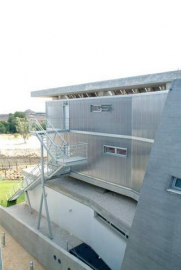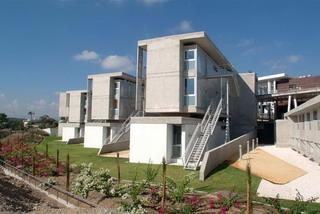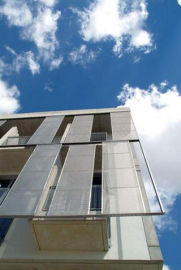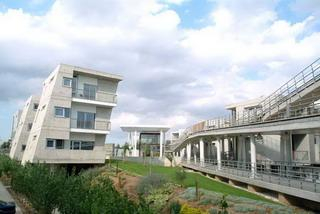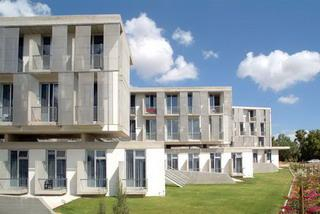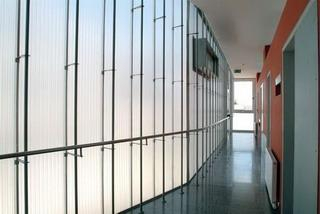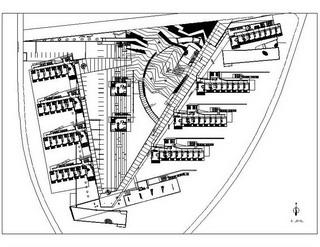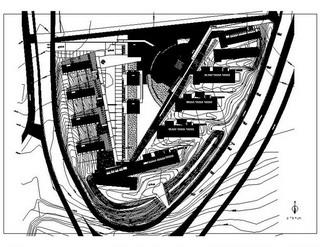Students Residence - University of Cyprus
A design that evolves around the notions of the individual within the anonymous enormity of the crowd, the description, definition and constraint of space and the creation of noteworthy elements and events that inform, that transform a greater whole.
Accommodation is always an exercise in transcending scales, in allowing the individual space and identity enough without losing the context of the larger organism.
To this effect the design focuses around the creation of highly individual volumes, variegated and described through material, texture, levels, volumes and location. Further ingredients are provided through the nature of place, with framed views and smaller visual escapes offering a sense of location and scale along with the insertion of the public realm and facilities into an oval at the heart of the project.
Holding the schemes individual elements and events together in a tangible whole are the gentle streets, ramps and elevated walkways. A series of tangible routes that create a fluid flow across levels and layers. These evolve and center about the oval, public heart of the scheme, whose series of functional fragments collect about a rustic, waterlogged, stonewall.
Further legibility is offered in the manner of layers that are wrapped about this nucleus, so that an outer skin of undulating landscape is set in contrast to the angular volumes of the residential ring. These deliberately awkward prisms are tied together by the network of movement channels, whose energy dissipates as the gentle sweep of the inner sanctum is reached. Here the impressive height of the gathering house, with its outreaching canopy and its skew geometry forming the end of a procession.
The notion is backed up by the segmented manner of approach, a series of events unfolding as one moves through several levels and shafts of space. The angles and tensions between volumes, in their fragmented grid and varied patterns, colors and material serve to create specific events, noteworthy details within the context of the whole.
A similar pattern is to be found within the circulation and common spaces of individual dormitories, with double height voids and bridges, translucent walls carefully contrasting rough concrete and small apertures and a confident application of color. Traveling as far as the individual cell one finds dropped ceilings forming cave-like storage spaces and tidy balconies which can be manipulated through sliding metal grilles, enlivening the façade of the whole, hinting at individuality. The western sets of dormitories are also loosely grouped under a large, louvered canopy; which offers both a wider identity and climatic protection to the area.
From a distance one perceives a series of strongly defined buildings sited within the enveloping curve of an amphitheatre. Placed against this at the other extreme of the scale is the rough fabric of the material, its many angles and corners acting as a casual reference to the interwoven village houses that are typical of the island.

